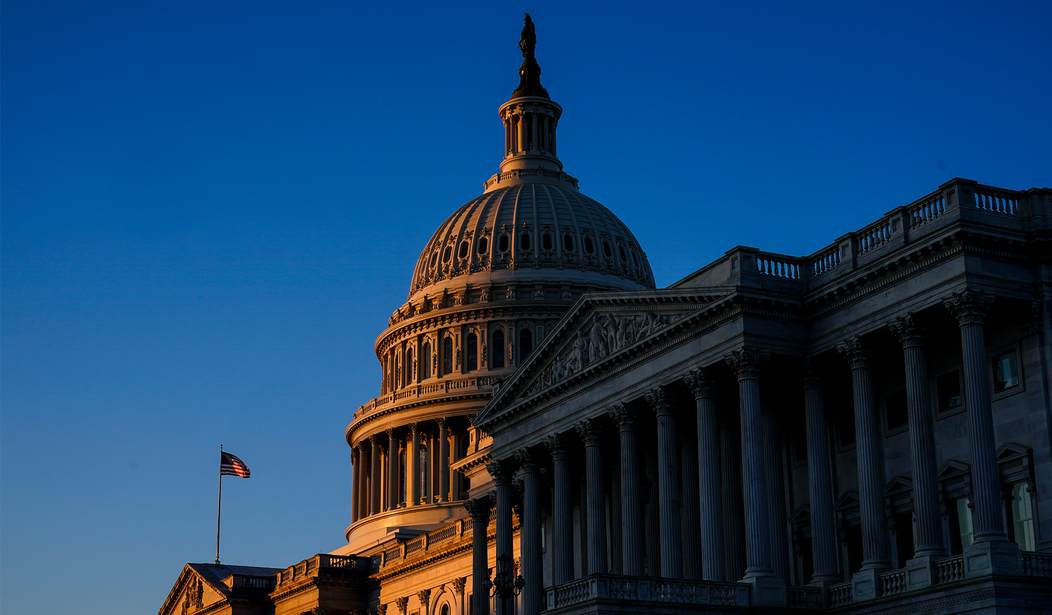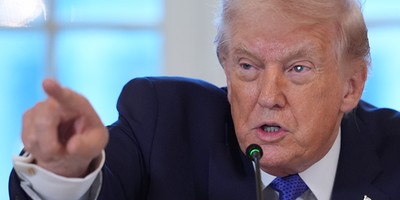In 1939, an audience of real-life senators and House members watched the world premier of “Mr. Smith Goes to Washington.” Thirty-year-old Jimmy Stewart played the idealistic Mr. Smith, and Claude Rains, the corrupt senior senator. The film climaxed as the freshman senator labored into the 24th hour of a one-man filibuster, finally collapsing, vowing to continue his fight against the corrupt political establishment.
Most of the real senators attending the movie review took this in good humor.
Some not. Senate Majority Leader Barkley said it made the Senate look like “a bunch of crooks.” The movie was very popular, second only to "Gone with the Wind" in receipts that year.
The filibuster was used to obstruct civil rights legislation from the 1920s through the 1960s. In 1957, Democrat Strom Thurmond blocked civil rights legislation by holding the Senate floor continuously for 24 hours and 18 minutes. In 1964, Senator Robert C. Byrd followed suit with an address that lasted over 14 hours. After 60 working days the filibuster was finally broken by 67 senators. Illinois’ Everett Dirksen had obtained the Republican votes needed, and quoted Victor Hugo saying, “Stronger than all the armies is an idea whose time has come. . .for equality. . .it is here."
A subsequent change now requires 60 votes for cloture. Prior to 1806, a Senate rule allowed a Senator to “call the previous question” to end debate by majority vote and move to a vote on the bill. Vice President Aaron Burr wanted the rule book cleaned up and the “previous question rule” was eliminated. The reason for this rule change is unclear, but it opened the door to unlimited debate.
It was 30 years before the first filibuster occurred and another 20 before it picked up the name filibuster for senators giving lengthy speeches to delay a vote on the floor. It was rare because the senator had to actually stand on the floor and continue to speak. This brought attention to the issue and delayed the legislation, but rarely defeated it.
Recommended
Whereas the filibuster had been used rarely (with the exception of civil rights) in the past 20 years, it has now become endemic. From 1917 when “cloture” was put in place until 1970, there were fewer than 60 total cloture motions. The Senate is supposed to be that saucer that cools the hot cup of the House making it more thoughtful and less subject to hot politics of the day. However, the number of filibusters has skyrocketed making that saucer more like a frozen plate. In 2017-2018 alone there were 168 cloture votes. Only 52 passed by a recorded vote. The Senate tradition of unanimous consent to consider a bill has been replaced with a filibuster threat on anything important.
So why the huge increase in filibusters? The filibuster used to be a way to extend debate, it is now a way to kill legislation. All it takes is for a senator to inform his leader that he intends to filibuster a bill to stop it from even being debated if it can’t get 67 votes to close debate. The Senate practice of a “hold” is a cousin of the filibuster. A senator declares that they will filibuster a nomination. This means that 60 votes are needed to even get to a vote on the nominee. These procedures are abused. They are time consuming and can be used to gum up the legislative process. A nominee who may pass almost unanimously if a vote is actually held is left in limbo. Senators do this to gain leverage on other issues.
Many Democrats are renewing calls for an end of the Senate Rule 22, which allows the filibuster. Without the filibuster the Democrats in the Senate could vote to increase the number of Supreme Court justices, enact a national abortion law, pass radical energy legislation, even vote for statehood for the District of Columbia or Puerto Rico (all by simple majority vote) without the extended debate of the filibuster. Consider that even with a razor-thin majority in the Senate the Democrats have been very disciplined on party line votes. Witness the vote on Obamacare and the recent climate bill. The prospect for radical partisan legislation is obvious. But beware! What is good for the goose is good for the gander.
The filibuster slows major legislation on important issues. This gridlock has resulted in a shift of power to the executive branch. Witness the Executive Orders that yo-yo back and forth from the administrations of Republican to Democrat and back. The previous Executive Orders are cancelled and replaced with the opposite.
In 1994, the new Members of Congress of the “Republican Revolution” were unhappy at how slow the Republican Senate was enacting our Contract With America. Senate Majority Leader Bob Dole even told Speaker Newt Gingrich to “Cool it.” Among issues the Democrats were apoplectic about was our plan to reform welfare and require work for the able bodied. Tensions were high. A colleague complained to a more senior Republican about the “enemy” Democrats. The senior member replied, “The Democrats are our opposition, the Senate is our enemy.”
There are ways to get around the filibuster. The Welfare Reform Act of 1996 became law only because it was fast-tracked through budget reconciliation which bypasses the filibuster. Similarly, the Affordable Care Act became law on a party-line vote through reconciliation bypassing the threat of filibuster. In 1996, the filibuster stymied our efforts to overturn recent Clinton Department of Labor rules and led to the 1996 Congressional Review Act (CRA). The CRA allows Congress to fast-track review of regulations without being stopped by a Senate filibuster. The CRA was used to strike down 16 Obama-era rules, but rarely since.
The “budget reconciliation” process was enacted in the 1970s to get around the filibuster. It allows taxing and spending bills to become law with simple majority votes, bypassing the filibuster. Unfortunately, this results in massive omnibus bills of thousands of pages appearing from behind closed leadership doors. The rank and file members don’t understand many of those omnibus bill provisions, certainly not fine points referring to legislative language. This is a bad way to legislate.
There is plenty of hypocrisy on the filibuster issue, depending on the side you occupy at the moment. Presidents Obama and Biden have been vociferous both in its defense and it’s abolition. Similarly, Republicans have asserted its benefits when in the minority and chafed under it when in the majority.
There are ways to modify the filibuster without doing away with it totally and eliminating the minority voice. One is to require more sponsors, maybe five, to initiate a filibuster. That way one rogue senator (sorry Mr. Smith) can’t gum up the works. This would significantly reduce petty holds on nominees for using the hold for leverage on a totally different issue.
Next, make it easier to break a filibuster. Democrats in the Senate reduced the threshold to 51 votes for Obama’s lower court nominees in 2017. Senator McConnell followed suit for Trump’s Supreme Court nominees. The Senate could reduce the threshold vote for cloture for other bills. Senator Tom Harkin once proposed gradually dropping the required vote to end debate to a majority over eight days.
We should return to actual “talking” filibusters. If at any point no senator was present on the floor maintaining the filibuster, then the presiding senator would rule the extended debate over and the Majority Leader could call for a vote on the bill.
The presumption in favor of a filibuster could be reversed by requiring that the minority produce 41 votes to maintain the filibuster rather than the majority having to produce 60 votes to overcome one. In 2009, the Democrats had 60 members but couldn’t break a filibuster because Sen. Kennedy was dying at home.
Finally, reduce the 30 hours of post cloture debate required under current rules after it is already clear that the bill has enough votes to pass. This would be particularly useful on nominees after cloture has already passed. Maybe even give up all post-cloture debate on nominees and reduce the time between when a cloture petition is filed and when the Senate would vote on cloture.
Under the Permanent Rules of the Senate it takes a two-thirds vote to change the rules. But rules changes were done in 2011, 2012, 2013, 2017 and 2019 by simply changing what the rules mean. This legislative slight of hand means a majority vote could change the filibuster rules. The Democrats currently have this ability if they vote as a block.
With the shifting balance of power between the legislative and the executive, power should not be ceded to the executive because Congress can't do its job. Democrats and Republicans in Congress should agree on defending congressional power. After all, our Founders did not want too much power vested in an executive king or tyrant. The executive branch is unilaterally now making law through bureaucratic rules and presidential executive orders.
This trend is dangerous to our democracy. It should deeply concern and encourage all members of the Senate to work together on reforming the filibuster.
Greg Ganske, MD, is a retired Iowa surgeon and Member of Congress from 1995-2002.

























Join the conversation as a VIP Member